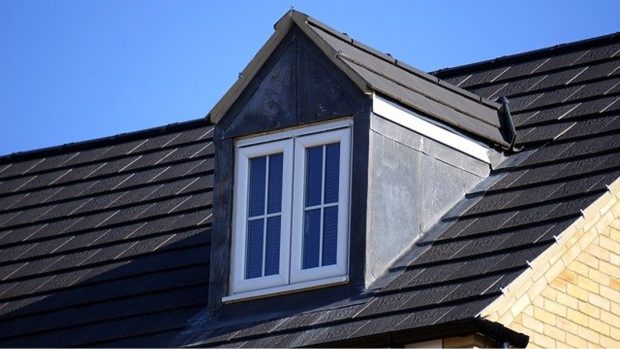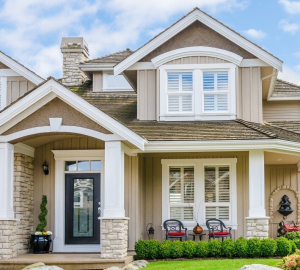Roofs protect you and your loved ones from rain, snow, ice, debris, and heat. Having a proper maintenance routine ensures that your roof remains in good condition and serves you for a longer period of time. Regular roof inspection helps identify faults such as leaks that, once ignored, could escalate to a bigger problem that will require a lot of money to repair. A well-maintained roof also improves curb appeal and increases your home’s value. Here are roof maintenance tips every homeowner should know.

1. Look out for repair signs
Your roof goes through so much, and rain, heat, ice, snow, debris, and other elements can leave it looking old and tired. This may cause leaks, damaging your home’s interior and creating a breeding ground for mold.
To know if your roof needs repairs, check if it’s saggy. A saggy roof doesn’t always mean that it needs repair; it also indicates that your rafters are weak. Additionally, a damaged roof increases the energy bill as the HVAC system has to work harder to maintain the correct internal temperature. You can also look out for other signs such as missing or loose shingles, curled or cracking shingles, shingle granules in the gutter, a discolored roof, among others. Hire the services of a skilled and experienced residential roof contractor such as Nu Look Home Design to get your roof looking new again.
2. Protect your roof from UV and heat damage
The type of damage UV rays and heat can do to a roof varies depending on the roofing materials, the roof’s age, and the climate in your locality. However, some common roof problems include decay, cracks, warping, and thermal shock, resulting from fluctuating temperatures. Applying coating on your roof protects it from UV rays and heat, increasing longevity. A reflective white coating reduces the roof temperature to reduce the need for HVAC cooling and lower utility bills. Roof coating also reduces and controls corrosion on metal roofs.
3. Keep the gutters clean
To ensure the functionality of your gutter, get rid of debris and clogging dirt for clear water passage. Cleaning your gutters involves first assessing them for clogs and debris. The various ways to clean your gutters include using a leaf blower, a wet/dry vacuum, a power washer, and a garden hose. In addition, wear heavy-duty gloves and then use a ladder, bucket, and a garden trowel to slowly remove all the leaves, debris, and other clogs. Installing gutter guards on your gutters keeps them safe and clean for a long time.
4. Get plants off your roof
Removing plants and especially moss and algae, from your roof as soon as they start growing protects it from the moisture they store. Leaving vegetation to thrive on your roof makes it absorb water, increasing its weight, causing it to sag and breed fungi such as mold. To help you get rid of moss and other harmful plants, calling a residential roofing contractor will help without damaging the roof. You can also use acidic cleaners like lemon and apple cider vinegar and essential products like salt, baking soda, and powder.
5. Ensure the downspouts are clean and tighten their connections
When rainwater leaves the gutters, it goes through the downspouts to the drainage. Downspouts are pipes that are securely fastened on your and attached to the gutters to aid water outflow. To clean the downspout, remove its extension, then use gloves to insert a gutter scoop and remove all the dirt and debris. Rinse with water. You may also consider getting a professional service to help clean and unclog the downspout.
6. Conduct regular attic inspections
An attic inspection involves assessing the area between the roof and the ceiling to establish any underlying problems before they escalate. It involves airflow observation, insulation measurement, and ensuring proper ventilation. An attic inspection doesn’t require professional assistance unless you come across a problem that needs an expert.
When carrying out an attic inspection, look for poor ventilation signs such as condensation, mold, and rusted nails. To inspect for water leaks, find mold, water stains, and rot. If you find nests, leaves, droppings, or damaged insulation, do pest control. Inspect exhaust ducts and vent stacks if they go all the way out.
7. Trim tree branches hanging around your roof
Any branches hanging close enough to reach the roof, windows, or the house can cause harm and should be trimmed. Since the hanging branches are already a threat to your roof and home, get an expert to do it while observing your home’s safety. If left alone, branches become a threat to your home during a storm, clog the gutter and the downspout, and lead mold growth on the roof. Additionally, if the branches are too close, they can damage your roof and house during windy seasons.
8. Maintain roof flashing
Roof leaks are usually from leaks around metal roof flashing and the intersection between roofing and obstructions. Roof flashing ensures the safety of roof plane junctions, skylight, chimneys, and roof edges. For proper maintenance, inspect flashing and the roof shingles condition. Look if you can find loose nails, holes, and seals at the flashing edges. Confirm if joints have been exposed by the dryness, cracking, and crumbling of the roofing cement and caulk and reseal the flashing.
9. Ensure the roof has insulation
Proper insulation helps you achieve sufficient ventilation and good airflow. Including insulation on the attic floor and a vapor retarder prevents moisture from reaching the attic, protecting the house from heat loss or gain. This ensures that the HVAC system doesn’t have to work extra hard to maintain indoor temperature.
10. Create a roof maintenance schedule
Roof maintenance shouldn’t be a one-off activity; coming up with a maintenance routine plus a maintenance checklist guide you through from inspection to ensuring that the roof is all fresh and fully functional. Begin your schedule with areas that need frequent maintenance with less complicated procedures, then plan for the time-consuming technical practices. This will ensure that your roof is always properly maintained and in good shape.
Endnote
A routinely maintained roof increases a home’s value, boosts curb appeal, and lasts long. These are some of the roof maintenance tips every homeowner should know and practice.



